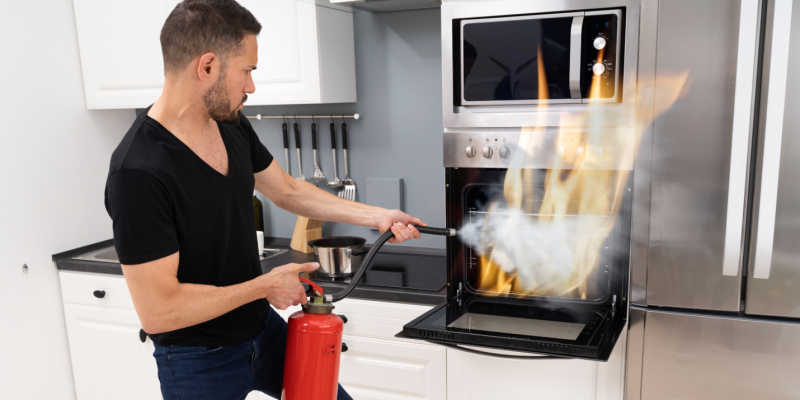When a fire breaks out in your home or business, even a small one, the visible damage might seem minimal at first glance. Perhaps it was contained quickly, with little more than a scorched countertop or a smoke-filled room. However, the impact of a fire often goes much deeper than what meets the eye. What may appear as minor surface damage can quickly evolve into long-term issues if not properly addressed. That’s why it’s important to understand the hidden signs that indicate your property still needs professional attention—even if the flames didn’t spread far.
Here are four key signs your property could benefit from fire damage restoration, regardless of the fire’s size.
1. Persistent Smoke Odors That Don’t Go Away
One of the most common indicators of lingering fire damage is a persistent smoky smell that refuses to fade, even after airing out the space. Smoke particles are incredibly small and can infiltrate porous materials like walls, ceilings, upholstery, and carpet. The scent might be especially noticeable in warmer weather or when the HVAC system is running, as heat can re-release smoke particles into the air.
Homeowners often try to mask the smell with candles, air fresheners, or DIY cleaning methods, but these are only temporary solutions. If the odor remains days or even weeks after the incident, it’s a strong sign that the smoke has penetrated deeper than surface cleaning can handle. At this point, professional fire restoration services become essential to fully eliminate the source of the smell and prevent it from becoming a permanent fixture in your space.
2. Soot Stains on Walls, Ceilings, or Vents
Even a minor kitchen fire or electrical spark can produce soot, which may appear as black or brown stains on surfaces. Soot is more than just a cosmetic issue—it’s acidic and can continue to damage materials long after the fire has been extinguished. If left untreated, soot can corrode metal, discolor paint, and eat away at materials like wood and drywall.
What’s more, soot particles can spread throughout your home via air currents and HVAC ducts, reaching areas that were never directly exposed to flames. If you notice fine, dark residue on walls, ceilings, or vent covers, it’s a clear sign that your property has been affected and needs thorough cleaning by professionals who understand how to remove soot safely and effectively.
3. Discoloration of Surfaces and Materials Over Time
In the immediate aftermath of a fire, some surfaces may appear unaffected. However, over time, exposure to smoke and soot can cause gradual discoloration. Walls may start to yellow, especially near the ceiling or around electrical outlets. Cabinets, countertops, and appliances may take on a dull or uneven appearance. Fabrics may look dingy or develop mysterious stains that weren’t noticeable before.
These changes happen slowly and may be mistaken for regular wear and tear, but they are often a result of chemical reactions caused by soot and smoke residue. The longer these contaminants remain in place, the more difficult they are to remove, and the more damage they can cause. If you begin to notice unexplained fading or staining weeks after a small fire, it’s a strong indicator that fire damage restoration is needed.
4. Compromised Air Quality and Respiratory Issues
After a small fire, you might feel relief that no one was injured and the damage seems minimal. But if members of your household or staff start to experience unexplained coughing, headaches, or respiratory discomfort, there may be lingering toxins in the air. Fire releases a wide variety of harmful particles, especially when synthetic materials like plastics or treated wood are burned. These particles can linger in the air and get recirculated through your HVAC system.
Without proper filtration and air scrubbing, these contaminants can pose a risk to your health long after the smoke has cleared. This is especially true for individuals with asthma, allergies, or compromised immune systems. If your indoor air quality seems worse after the fire—even a small one—it’s time to consider fire restoration services that include air purification and environmental testing.
Conclusion: Small Fires Can Leave a Big Impact
It’s easy to underestimate the damage caused by a small fire. After all, if the flames were quickly contained and the structure appears intact, it may seem like a full-scale cleanup isn’t necessary. But the truth is, the effects of smoke, soot, and heat can quietly wreak havoc on your property and health.
Persistent odors, staining, discoloration, and poor air quality are all signs that deeper issues are present. Left untreated, these problems can lead to expensive repairs down the road and even put your health at risk. That’s why it’s important to take fire damage seriously, no matter how small the incident may seem.
When in doubt, have a professional assess your property. It’s the best way to ensure your home or business is truly clean, safe, and restored to its pre-fire condition.

Comments